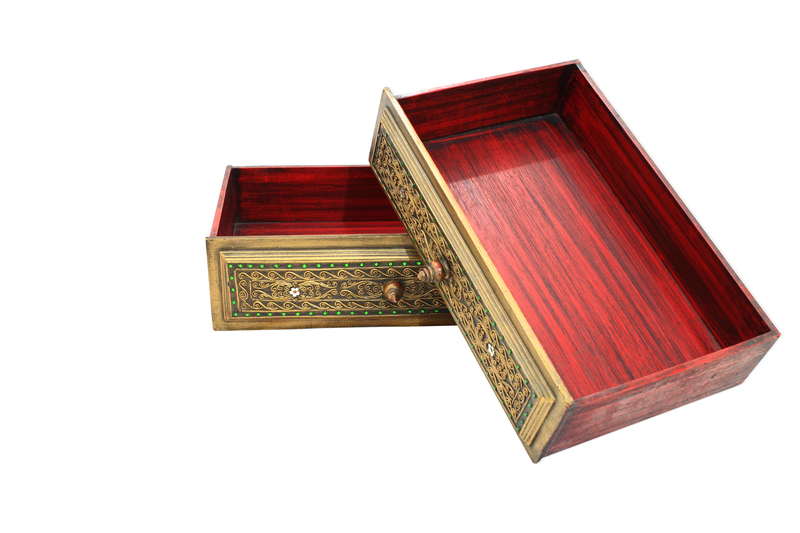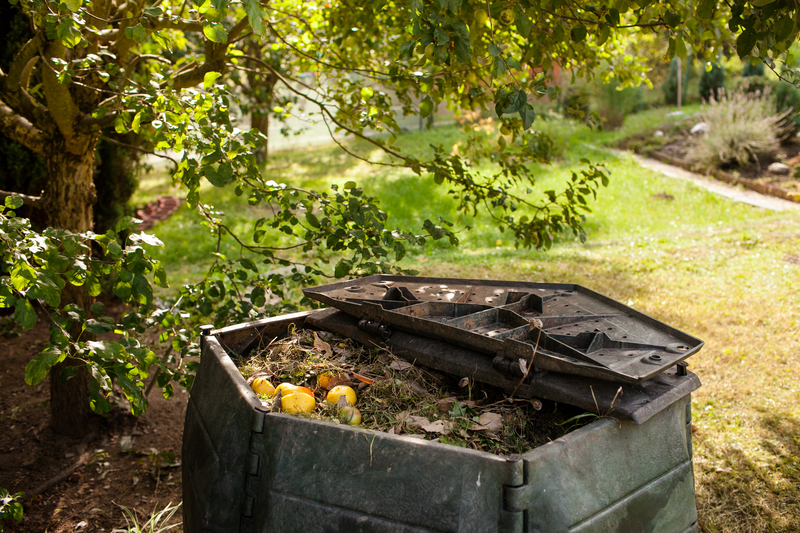Create a Clutter-Free Sanctuary: Expert Clean Up Advice
Living in a clutter-free environment is about more than just aesthetics--it's a lifestyle choice that supports physical and mental wellness. Many seek to transform their homes into sanctuaries free from excess belongings and visual chaos. But with busy lives and accumulating possessions, achieving this can feel overwhelming. Don't worry--this guide offers expert clean up advice and actionable decluttering techniques. By following these steps, you'll learn how to organize your space, maintain harmony, and create a sanctuary that nurtures the mind and soul.
Why Prioritize a Clutter-Free Sanctuary?
Before diving into decluttering strategies, it's important to understand the profound benefits of a well-organized home. Here's why you should prioritize creating a clutter-free oasis:
- Reduced Stress: Visual clutter increases stress and anxiety levels. A tidy environment offers peace and relaxation.
- Boosted Productivity: Decluttered spaces help you focus better and increase efficiency during daily tasks.
- Healthier Living: Less clutter means less dust and allergens, promoting health and well-being.
- Enhanced Creativity: Clean and organized surroundings foster creative thinking and inspiration.
- Improved Social Life: You'll feel confident inviting friends and family over, embracing meaningful connections.
Are you ready to take the plunge into minimalism and reclaim your home? Explore the best strategies below.

Step-by-Step Clean Up Advice from Decluttering Experts
1. Set Clear Intentions for Your Sanctuary
Begin your journey by envisioning the purpose and atmosphere of your clutter-free sanctuary. Ask yourself:
- How do I want to feel in this space?
- What activities or functions are most important here?
- What items truly bring joy or serve a need?
Visualizing your end goal fuels motivation and determines which possessions are worth keeping.
2. Start Small and Tackle One Area at a Time
Decluttering an entire home is daunting. Instead, break the project into manageable zones. Start with a drawer, closet, or corner to build momentum. Experts suggest these introductory areas:
- Entryway: Remove shoes, bags, and coats that pile up near the front door.
- Kitchen Counters: Put away or donate unused gadgets and only keep daily essentials out.
- Bedroom Nightstand: Clear clutter for a peaceful bedtime routine.
Finishing small areas gives you an immediate sense of accomplishment and inspires you to keep going.
3. Sort, Edit, and Categorize
Professional organizers recommend the following technique for every space:
- Remove Everything: Clear the area completely to get a fresh perspective.
- Sort into Categories: Separate items into groups (clothes, books, sentimental, papers, etc.).
- Assess Each Category: Ask yourself which things you love, use, or need.
- Decide Quickly: If you haven't used or appreciated an item in the past year, consider donating or discarding it.
Simplify decisions by using the "joy check": if it doesn't serve a purpose or spark happiness, let it go.
4. Establish Streamlined Organizational Systems
A clutter-free home relies on efficient organization. Try these expert tips:
- Use Storage Solutions: Invest in baskets, clear bins, shelves, and drawer organizers.
- Label Everything: Help household members remember where things go, making tidying effortless.
- Store Like with Like: Keep similar items together so you can always find what you need.
- Utilize Vertical Space: Maximize storage using wall-mounted racks, pegboards, or tall bookcases.
Remember, organization is personal--choose systems that work for your daily routines and preferences.
5. Let Go of Guilt and Sentimental Clutter
One of the most significant decluttering challenges is parting with sentimental items. However, experts advise reframing your mindset:
- Memories are not objects. Cherish the memory and keep only items that truly capture it.
- Honor by Displaying: Instead of storing keepsakes, choose a few to showcase beautifully.
- Digitize Paper: Scan photographs, letters, or artwork you can't part with physically but want to reduce in volume.
Release guilt over gifts or inherited items you don't use--your sanctuary is for you, not for holding onto the past.
6. Maintain with Daily and Weekly Habits
A spotless sanctuary is created and maintained through consistent routines. Here's how decluttering professionals keep spaces neat:
- 5-Minute Resets: Set a timer at the end of the day to restore order to living areas.
- Weekly Purges: Decide on a specific day each week to sort through mail, paperwork, and put things back in place.
- One-In, One-Out Rule: For every new item brought in, donate or discard one existing item.
- Seasonal Reviews: Revisit spaces every few months for deeper decluttering and organization.
Remember, maintenance is key to preventing the accumulation of new clutter and keeping your sanctuary serene.
Decluttering Techniques Backed by Experts
When it comes to reducing clutter and building an organized home, renowned experts offer signature methods:
Marie Kondo's "KonMari" Method
- Spark Joy Test: Hold each item and note your emotional reaction. Only keep what genuinely brings happiness.
- Category-by-Category: Declutter by item category, not location--start with clothes, then books, papers, and so on.
The Minimalists' 90/90 Rule
- If you haven't used an item in the last 90 days and don't plan to use it in the next 90 days, let it go.
Peter Walsh's Approach
- Vision for Each Space: Define the room's function and only keep items that support that purpose.
By experimenting with multiple methods, you can discover what suits your personality and maximizes your sanctuary's tranquility.
Room-by-Room Declutter and Organization Ideas
Each room has unique needs. Here are targeted decluttering tips and clean up advice for every major space:
Living Room Sanctuary
- Edit Decor: Display only a few cherished pieces. Store or donate the rest.
- Cord Control: Bundle electronic cords and stow chargers in closed bins.
- Magazine and Book Rules: Keep only current reads; recycle the rest monthly.
Clutter-Free Kitchen
- Countertop Clarity: Remove appliances you rarely use from counters.
- Pantry Purge: Toss expired goods and group similar foods together for easier access.
- Experiment with Open Shelving: Store everyday dishes for quick access and visual motivation to stay tidy.
Tidy Bedrooms
- Under-Bed Storage: Utilize bins for out-of-season clothing or bedding.
- Minimal Nightstand: Keep only essentials--lamp, book, water--and remove excess items.
- Closet Clear-Out: Arrange clothes by type and color; donate garments you no longer wear.
Home Office Organization
- Paperless Systems: Opt for digital files and scan important documents to eliminate piles.
- Caddy Control: Corral supplies in a desk caddy or drawer organizer.
- Weekly Reset: Take five minutes every Friday to put away loose items and file papers.
Declutter Your Mind: The Psychological Benefits of an Organized Home
Physical clutter can foster mental clutter and overwhelm. By transforming your space into a clutter-free zone, you:
- Experience Improved Mood: Clean environments are linked to happiness and reduced anxiety.
- Boost Focus: Clear surroundings minimize distractions and improve productivity, whether at work or rest.
- Promote Better Sleep: An organized bedroom encourages relaxation and deeper rest.
Remember, a clutter-free sanctuary is not just about neat shelves and empty counters--it's about mental clarity and emotional well-being.

Maintaining Momentum: Staying Clutter-Free Long-Term
Once you've achieved an organized home, maintaining it requires intentional habits and mindset shifts:
- Mindful Shopping: Only purchase items that are needed or truly loved. Avoid impulse buys.
- Practice Gratitude: Appreciate what you own and let go of excess to make space for new experiences.
- Encourage Family Participation: Delegate tasks and build routines that involve all household members.
- Celebrate Milestones: Take pride in progress and treat yourself to a clutter-free activity, such as reading or yoga in your renewed space.
Conclusion: Embrace Your Clutter-Free Sanctuary
Creating a clutter-free sanctuary is a transformative journey--one that brings harmony, health, and happiness into your life. By adopting these expert cleanup strategies, room-by-room tips, and ongoing organizational habits, you'll cultivate a peaceful refuge. Let your home reflect and nurture who you are, free from the burdens of excess and distraction.
Start today, embrace minimalism at your own pace, and enjoy the lasting benefits of a space that soothes, inspires, and supports your best self.
Remember: Your sanctuary awaits. Declutter, organize, and transform your environment--one step at a time!